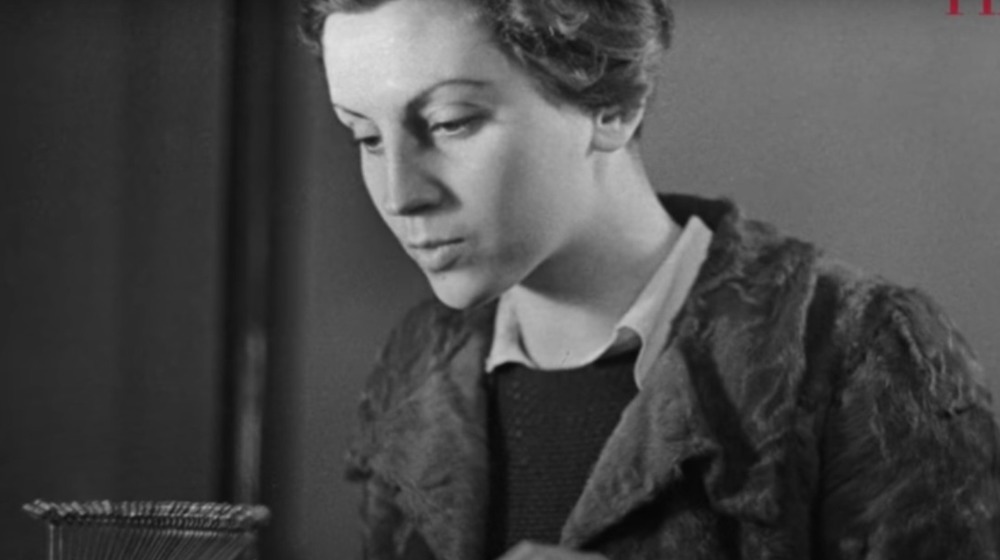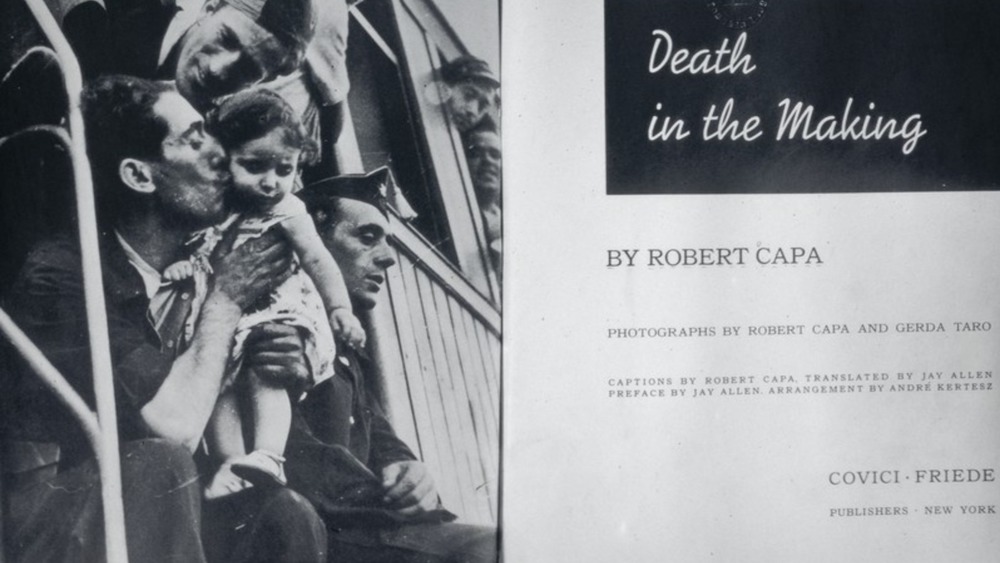What You Didn't Know About Gerda Taro
Gerda Taro is slightly better known by the alias she shared with her partner, Endre Friedmann. Working together, they were known as the photographer Robert Capa. Per AnOther, Taro was born Gerda Pohorylle to a Jewish German family in 1910. At the age of 23, she was arrested for distributing anti-Nazi materials and fled to Paris, France. There, she met Endree Friedmann, a fellow Jewish refugee who had left Hungary. Their relationship was romantic as well as professional; he taught her photography and she taught him "how to make the best of himself," according to Jane Rogoyska, author of Gerda Taro: Inventing Robert Capa, as quoted by the BBC.
It was difficult for foreign photographers to get published in French newspapers, and so they invented an alter ego, Robert Capa, a wealthy, successful American photographer who had just arrived in Paris — hence the reason no one had heard of him before. Gerda started using her own name at this point, and Friedmann kept using the Robert Capa alias.
When the Spanish Civil War started in 1936, Taro and Friedmann saw an opportunity for "Robert Capa" to raise his profile and for the two of them to join the fight against fascism. They departed for Spain and lived and worked on the front lines of the war along with writers Ernest Hemingway and George Orwell, as reported by AnOther. The two photographers traveled throughout Spain shooting pictures of the war and sharing two cameras, a Rolleiflex and a Leica.
Taro had her own photographic style
Many periodicals published their photographs, including France's Vu, Regards, and Ce Soir, Great Britain's Illustrated London News, and the United States' Life. Taro developed her own photography style and was known as "La Pequeña Rubia," or "the little blonde," by Republican troops. She not only took dramatic shots of soldiers falling and bloody conflict, but also photographed other effects of war, "from refugees and stray dogs to shots of the bullet-worn streets." A series of photographs showed women training for military, including a dramatic shot of a woman "bent down on one knee in lace-up heels, a pistol cocked in her hand," per AnOther.
In 1937, Taro left the trenches of Brunete, where she'd been holed up with soldiers, to buy more film in town. She jumped on the running boards of a vehicle transporting wounded soldiers. The vehicle collided with an out-of-control tank and Taro was crushed. She died in the hospital a day later, making her the first female photojournalist killed in action. Her work was captured in the 1938 Robert Capa book Death In The Making, but the extent of her achievements was largely forgotten after Capa died in 1954. A suitcase full of Capa and Taro negatives was discovered in Mexico in 1995. Released to New York's International Center of Photography in 2007, the discoveries revealed just how much of Taro's work had been incorrectly credited to Capa.

